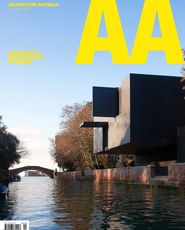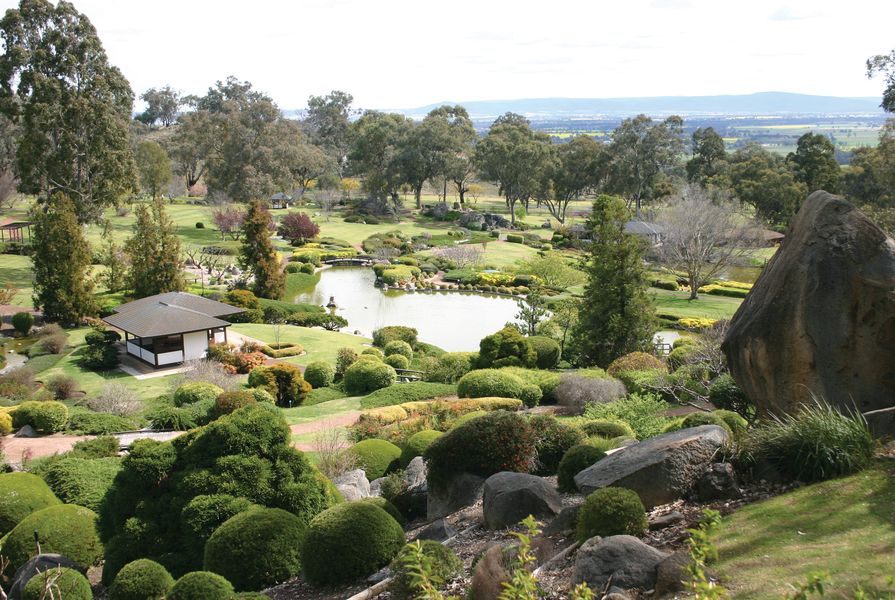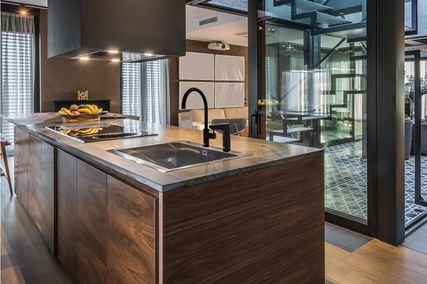Early experiments with civilian confinement in Australia took place on reserves and mission stations, where dispossessed Aboriginal people gathered during the later years of the nineteenth century. In the settler town of Coura Rocks (present-day Cowra) in Central (West) New South Wales, Wiradjuri peoples alienated from the Lachlan, Macquarie and Murrumbidgee river lands sought refuge at the Mulyan reserve around 1890. In 1924 the thirty-two-acre property was renamed Erambie Mission, where, writes Lawrence Bamblett in Our Stories are our Survival , an early period of unmanaged, residence-forged community resistance to settler hostility occurred.
Today, a patch of tightly knit streets at the periphery of the generous grid provides evidence of Cowra’s divisive past. In contrast, the town’s more famous internment history celebrates its military commitments through encampments, wartime production and training. The Cowra Military Training Camp for the Australian Imperial Force housed 80,000 to 100,000 soldiers between 1940 and 1947. The district’s honour roll cites 510 names. Historian Graham Apthorpe describes Cowra of the 1940s in A Town at War . Our knowledge of Cowra is filtered through a fatal escape attempt on 5 August 1944 when around 1,000 Japanese prisoners broke out of the Cowra Prisoner of War camp. The resultant melee in the early morning darkness saw 235 casualties (four Australian soldiers and 231 Japanese POWs) and a further 108 Japanese wounded. Although escapees were apprehended, this traumatic incident, the only large-scale confrontation with POWs on Australian soil, catapulted this obscure town into national history.
Cowra’s military townscape describes the congruence of numerous geopolitical scenarios in a microcosmic representation of Australia’s Pacific War. Yet it also poses the question of how citizenship recurs and is negotiated through incarceration. Cowra offers several examples of how internment architectures shape citizen-subjectivities as troubling antecedents to current immigrant detention policy. Three of these scenarios warrant close examination.
The Cowra Japanese War Cemetery holds Japanese POW and civilian remains.
Image: Anoma Pieris
The National Archives document a peak of 12,000 people interned in Australia in 1942, including 7,000 residents and 1,500 British nationals. They included prisoners captured in Europe or North Africa and interned at the cost of their own governments, Japanese prisoners from the Pacific theatre and Japanese imperial subjects from Asia. The history of the Directorate of Prisoners of War and Internees enumerates 25,727 persons incarcerated during World War II. Internment camps were established throughout Australia, including at Cowra, Hay and Yanco in NSW. The population of the No. 12 Prisoner of War Compound at Cowra peaked at 4,600 in 1946.
Planned in 1941 as a twelve-sided polygon-shaped enclosure, the Cowra camp comprised four compounds housing Japanese soldiers and non-commissioned officers, Koreans and Chinese from Formosa (Taiwan), and a few Thais and Malayans. The perimeter was surrounded by barbed wire fencing and an avenue called Broadway ran through its centre. Civilian internees included 5,000 Italians and 1,200 Indonesians including dissident Javanese prisoners of the Dutch. The Cowra camp expanded into a community, with stores, a kitchen, mess huts, showers and latrines, recreation huts, shops, playing fields and vegetable gardens.
Apthorpe reminds us that attitudes to foreigners were polarized in Australia and that war in the Pacific emphasized the Asian threat. Former, simplistic attitudes towards race and cultural difference were complicated by national alliances. The breakout – as evident in newspaper reportage at the time – intensified the perceived threat to the homeland and increased anxieties regarding Australian troops, elsewhere, in internment. These sentiments were undoubtedly heightened among Cowra residents who had lost family members in Japanese-occupied territory. The camp was a close and grim reminder of wartime realities. Shortly after the war, the buildings at the Cowra campsite were sold in a concerted effort to forget. But the camp as a spatial type was assigned a new purpose. Decommissioned in 1947, the Cowra Military Camp on Darby Falls Road was converted into the largest immigrant centre in NSW, alongside Uranquinty, Kapooka, Scheyville, Greta and Parkes. New immigrant arrivals were separated – men sent off to work across the country and women and children sent to the Cowra family camp until secure jobs and accommodation might reunite them. Each army hut was partitioned into six separate bedrooms for two to three people, with a common room at the end. By 1948 over two thousand European women and children, Latvians, Lithuanians, Estonians, Czechs, Ukrainians, Yugoslavs and Poles, were housed at Cowra. Dutch and Italian migrants would begin arriving in 1952. Accounts of the migrant camp describe the conversion and expansion of existing military facilities and make mention of the mess room, recreation room, hospital and theatre, and the construction of a school for the immigrants’ children. Reports suggest that up to 4,000 migrants were accommodated at the camp at its peak. A total of 17,000 immigrants from twenty-seven nations passed through the camp during its lifespan as an immigrant centre between 1949 and 1956. A disciplinary or military model, adopted for pragmatic reasons, had been converted into a passage towards Australian citizenship. The camp provided a temporal window for assimilating difference, educating immigrants and ensuring their productivity. It was a waiting room for the nation.
The five-hectare Japanese Garden at Cowra designed by Ken Nakajima suggests shared cultural tolerance.
Image: Anoma Pieris
These spatial histories of internment have transformed the Cowra townscape. The Cowra Japanese War Cemetery established in 1964 contains all Japanese POW and civilian remains in Australia from that period, including the casualties of the breakout in 1944. An entry sequence and monument designed by architect Shigeru Yura in 1964 evokes Japanese traditional designs. A section of the land that contained the former POW campsite has been heritage-listed and developed for tourism with a guard tower relaying an audio recording of its history. Europa Park commemorates the site of the former immigrant centre with a display of memorial pavers dedicated by postwar immigrants installed beneath the flags of their former nations. Yet Cowra’s most significant tourist attraction is the Japanese Garden, a five-hectare site, designed by Ken Nakajima and opened in two stages in 1979 and 1986. Three kilometres of pathways connect two lakes and several pavilions in the Japanese kaiyū shiki – traditional strolling garden – tradition first built for the Edo period Shogun Tokugawa Ieyasu as a miniaturized landscape of Japan.
The five-hectare Cowra Japanese Garden holds this microcosmic Japanese geography hostage at Cowra. The dry rocky hill-scape and unruly gum trees are disciplined and dressed as they enter the perimeter, visibly transformed into an alien topography. They mingle with Japanese cherry blossoms which steal out onto Sakura Avenue, to lead spirits from the cemetery to the Japanese Garden. The town holds an annual Sakura Matsuri – cherry blossom festival. This botanical interchange with its slippery geographic associations suggests shared cultural tolerance and loss.
The passage of internees through Cowra’s history reveals something of Australia’s national journey – in successive waves of migrants, in its recognition of proximity to Asia, and in evolving attitudes towards race. The journey is not tokenistic, being largely dependent on individual efforts and conciliatory practices supported by the Cowra Council. These are manifested in a twin city relationship with Jōetsu in Japan’s Niigata Prefecture: the location of the Naoetsu POW Camp, also known as Tokyo No. 4 Branch Camp, which housed 300 Australian POWs in 1943 and 1944. A reciprocal peace garden with museum and memorials was completed there in 1995. Animated by material, spatial and architectural interventions, violent histories are thus humanized.
The citizens of Cowra have circumvented national channels to build international diplomacy and dialogue. The city holds an annual Festival of International Understanding. The town makes its own history and builds its own commemorative spaces. The Japanese Garden is part of a larger Peace Precinct.
Meanwhile Cowra Tourism diverts difficult memories towards fresh rural diversions by promoting the region as “the great escape.”
Source

Discussion
Published online: 1 Oct 2015
Words:
Anoma Pieris
Images:
Anoma Pieris
Issue
Architecture Australia, July 2015



















